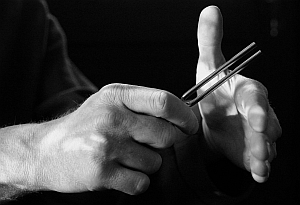 Engineers at Purdue University in West Lafayette, Indiana have applied tiny vibrating microcantilevers to sensors that could detect chemical and biological substances. Their research is described in this week’s online issue of the Journal of Microelectromechanical Systems (paid subscription required), and a patent is pending on their invention.
Engineers at Purdue University in West Lafayette, Indiana have applied tiny vibrating microcantilevers to sensors that could detect chemical and biological substances. Their research is described in this week’s online issue of the Journal of Microelectromechanical Systems (paid subscription required), and a patent is pending on their invention.
The team led by mechanical engineering professor Jeffrey Rhoads used minute slivers of silicon secured at one end that vibrate when a particle of a substance being tested bends the cantilever beyond its normal state, thus changing the vibration and subsequently the frequency of that vibration. Analyzing the frequency change normally reveals the particle’s presence and potentially its mass and composition.
As miniaturization of these devices increases, however, it becomes more difficult to measure frequency change. Rhoads and colleagues at Purdue came up with an alternative measure, namely the amplitude or amount of bend in the cantilever, rather than frequency. Measuring amplitude is easier than measuring frequency, say the researchers, because amplitude changes dramatically when a particle lands on the microcantilever, whereas the change in frequency is minute.
The research aims to apply this new approach to sensors capable of reliably measuring particles that have a mass of less than one picogram — one trillionth of a gram — at room temperature and atmospheric pressure. Based on this objective, researchers tested the cantilevers in a chamber filled with precisely controlled quantities of methanol to study their reliability. The findings show that the new sensors should be capable of more reliably measuring smaller quantities of gas than is possible with current sensors.
“We’ve made the signal processing part easier,” says Rhoads, “enabling small-scale, lower-power sensors, which are more reliable and have the potential for higher sensitivities.”
The microcantilever sensors have the potential to detect and measure components of substances such as certain proteins or DNA for biological testing in liquids, gases, and in the air. Devices based on this technology could be used in breath analyzers, industrial and food processing, security and defense, and food and water quality monitoring.
Read more: Medical Sensor Powered by Music Vibrations Developed
Photo: amonja/Flickr
* * *

 RSS - Posts
RSS - Posts
You must be logged in to post a comment.